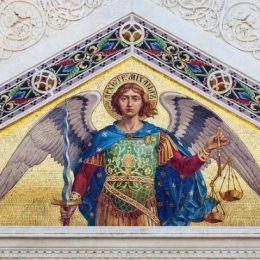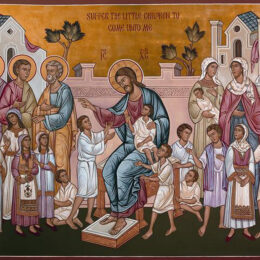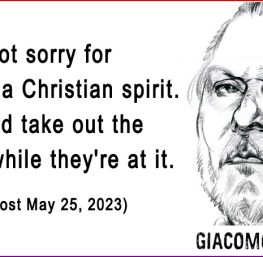940 AM Montreal November 27, 2006, EST.
ISTANBUL, Turkey (AP) – No moment of Pope Benedict’s trip this week may be more closely watched as his walk through the majestic Haghia Sophia, a domed complex whose history spans Istanbul’s stormy evolution from Christianity to Islam.
It’s not the homage to early Christianity that has many Turks on edge. It’s how Benedict could chose to pay his respects on Thursday – near the end of a four-day visit that begins Tuesday.
Any gesture perceived as worship – even as simple as making the sign of the cross – could be viewed as a serious affront by his hosts and undermine the Vatican’s attempts to rebuild goodwill with Turkey as a bridge to other Muslims countries.
“The Pope is treading on very sensitive ground as soon as he enters Haghia Sofia,” said Dogu Ergil, a professor of social and religious trends at Ankara University.
But it requires a sweeping view of Turkish attitudes to understand why.
Haghia Sophia – “Holy Wisdom” in Greek – rose from the ruins of an earlier church in the 6th century and now holds 15 centuries of religious and political history under its massive central dome and multicoloured marble columns.
It was the architectural and spiritual marvel of Christian Byzantium until the city – then known as Constantinople – fell to Muslim forces in 1453. Crosses and other Christian symbols were defaced and it became one of the most renowned mosques of the expanding Ottoman Empire.
In 1935, it again was transformed – this time into the Ayasofya museum during the secular reforms of Mustafa Kemal Ataturk, who built modern Turkey from the Ottoman ruins. Religious services are prohibited and Benedict’s visit is considered by Turkish officials as only sightseeing.
An open act of piety by the pontiff would likely enrage powerful Turkish nationalists, who hold sway over the political and military establishment, as a perceived signal of Christian claims to the site and a challenge to Turkish sovereignty.
“The risk is that Benedict will send Turkey’s Muslims and much of the Islamic world into paroxysms of fury if there is any perception that the Pope is trying to re-appropriate a Christian centre that fell to Muslims,” said an editorial in Turkey’s independent Vatan newspaper on Sunday.
It’s another complication amid many for Benedict in Turkey.
On Sunday, more than 25,000 demonstrators filled a square in Istanbul to denounce the Roman Catholic pontiff and his remarks in September in which he quoted a medieval Christian emperor describing the teachings of the Prophet Muhammad as “evil and inhuman.”
Some placards made reference to the 1453 Islamic conquest of the city. One read: “Constantinople is forever Islamic.”
Another sign featured a snake with two heads: one of Benedict and the other Ecumenical Patriarch Bartholomew I, the spiritual leader of the world’s more than 250 million Orthodox Christians and caretaker of the vestiges of a once-flourishing Greek Orthodox community in Turkey.
The pontiff’s pilgrimage to Istanbul is mostly about building stronger bonds with Orthodox churches, which split with the Vatican nearly 1,000 years ago over disputes including papal authority. But Benedict also plans a brief stop at the famous 17th century Blue Mosque – which faces Haghia Sophia – as a “sign of respect” toward Muslims, said Vatican spokesman Rev. Federico Lombardi.
There have been no discussions between the Vatican and Bartholomew’s office on the protocol for Haghia Sophia, said Rev. Frank Marangos, a spokesman for the ecumenical patriarchate.
“We have no information on what the Pope plans,” he said.
It has gone both ways on previous papal visits.
In 1967, Pope Paul VI dropped to his knees in prayer as stone-faced Turkish officials, including the foreign minister and a top general, looked on. But Pope John Paul II made no outward gestures of worship during his tour in 1979.
Last week, about 40 members of an ultranationalist party occupied Haghia Sophia, shouting “Allahu akbar!” – “God is great!” in Arabic – and kneeling to perform Islamic prayers.



